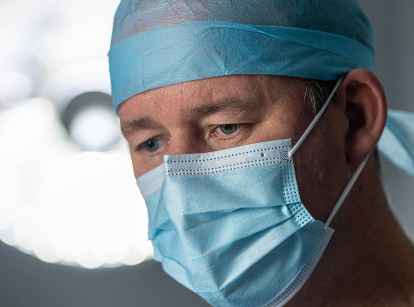Introduction
Controlled ovulation induction is a process in which medications are given to achieve ovulation, or egg release, from the ovary each month to help with getting pregnant. This process is started when the female patient is suspected either to be not ovulating regularly each month, or is thought to perhaps be not ovulating at all.
The most common cause of failure of ovulation is Polycystic Ovarian Syndrome (PCOS).
Other causes include an underactive thyroid gland, a raised level of a hormone in the body called prolactin, being very underweight or overweight, and also just getting older- all women ovulate less regularly as they get older.
Procedure
Ovulation induction can be achieved in one of two ways:
Using Clomid or Letrozole
These drugs weakly block the effect of the hormone called oestrogen in the body. This allows the brain to secrete higher levels of a hormone called Follicular Stimulating Hormone or FSH, which directly tells the ovary to recruit and start to mature an egg for release in the middle of the menstrual cycle, usually around day 14-16.
Clomid or Letrozole is started on Day 2 of the cycle, or the second day of the period. The drug is taken once a day until Day 6, five days in total, and is then ceased.
A transvaginal ultrasound is performed by Dr Friebe on about Day 10 of the cycle, looking for a dominant follicle on the ovary, which is a large, easy to see fluid filled cavity on the ovary which should contain the egg. The size of this dominant follicle will then allow Dr Friebe to estimate the approximate day of ovulation, to allow the couple to time sexual intercourse to hopefully conceive. A blood test is taken from the female patient at Day 21 of the cycle, checking for a rise in a hormone called progesterone, which will confirm ovulation has definitely taken place.
Clomid or Letrozole are both started at low levels, and increased as necessary if results are not being achieved. One must be careful with these medications, the chance of twins being conceived from 2 eggs being released is 10%, care must be taken to avoid triplets or more!
These drugs are quite easy to take with few side effects. They can be safely used for a number of months to try and achieve natural conception when ovulation looks to be the problem causing infertility.
Using low dose Follicular Stimulating Hormone (FSH) injections
FSH is usually given in an injection form in high doses for IVF cycles, when the goal is to obtain multiple eggs to hopefully fertilise with the sperm to form a number of embryos for transfers at a later date. Low dose FSH can be used under careful supervision to try to induce ovulation of one egg if the ovary is too resistant to respond to Clomid or Letrozole at their highest doses.
The FSH is given as in injection just under the skin, once a day at a low dose which is progressively increased until ovulation occurs. Generally weekly transvaginal scans are performed until a dominant follicle is developed. Once the dominant follicle is around 20-22 mm in size, the FSH injections are ceased and an alternative injection called Ovidrel is given once to “trigger” the follicle to release the egg 24 hours later. This again allows the couple to time their intercourse to coincide closely with the release of the egg.
Once again, great care must be taken to ensure the avoidance of using multiple eggs, and thus multiple pregnancies.
